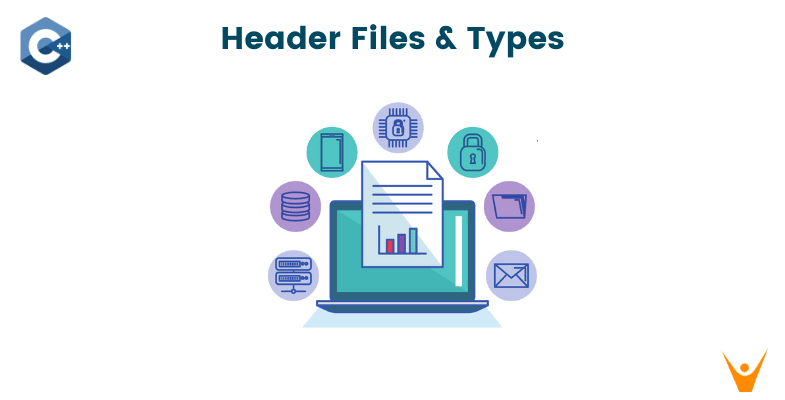Whenever we write code in C++, we must include at least one header file, without it the program cannot be written. A popular and simple example is the cin function which requires the stdin library to work. In this article, we will learn about C++ Header Files in detail.
What are Header Files in C++?
Header files in C++ contain specifications and numerous declarations for data structures like classes, objects, functions, etc. These files are also used to access a particular library in a program. The file extensions of header files typically include ".h" or ".hpp"
We use header files to reduce the amount of code that needs to be written. We can reuse code in various documents by just including the header file. Also, it allows you to reuse the functions that are declared in header files for various purposes.
By grouping related functions, classes, and constants into a single header file, programmers can more easily navigate their code. This speeds up the compilation process because the compiler reads the declarations for functions and classes without having to parse the entire source code file.
A header file must first be included in C++ code to use. This can be done using the #include declaration. This example shows how to print a message to the console by using the iostream header file:
#include int main() { std::cout << "Hello, world!" << std::endl; return 0; }
Output:
Hello World
What information do headers involve?
All header files in C++ are different. They each contain codes and declarations according to the functionality they provide. Libraries are also connected to header files and accessing them is also defined in them.
Header files are important components of software development that contain declarations for functions and classes defined in the corresponding source files. These declarations allow other parts of the program to use these classes and functions without needing to know how they were developed.
Header files may also contain preprocessor directives like #define, #ifdef, and #ifndef, which might be helpful if you want to change your program's behavior depending on specific circumstances.
Inline function definitions, or functions that are called within another function rather than as a distinct function, can also be found in header files. These functions enlarge within the code at the moment of the call, increasing their effectiveness and simplifying their administration.
Example of a header file that includes a function and a constant:
#ifndef MYHEADER_H #define MYHEADER_H const int MY_CONSTANT = 42; void myFunction(int arg); #endif
How many header files are there in C++?
The number of headers in C++ is not fixed. The headers that are available in C++ depend on the implementation of the compiler and the operating system. In general, C++ headers are typically stored in a directory called "include" or "headers" within the C++ installation directory.
Here are a few typical header file types:
- Standard library headers: These header files are a component of the C++ standard library and offer predefined functions and classes for typical jobs including input/output, string processing, and mathematical operations. The standard library headers "iostream", "string", "vector", and "cmath" are a few examples.
- User-defined headers: A programmer can define functions, classes, and other program elements in user-defined headers, which are header files that they generate themselves. Other sections of the program may have user-defined headers to allow access to these constructs.
- System headers: The header files that are specific to the hardware or operating system that the program is running on are called system headers. System headers enable access to functions at the system level, such as file I/O, network connectivity, and graphics rendering.
- External library headers: These are used by external libraries or frameworks that are used by programs. External library headers enable access to the classes and functions defined in the library or framework.
- Template headers: They include definitions of generic classes and functions that serve as templates. Template headers are used to provide methods and classes that can act on a variety of data types. They are frequently encountered in other header files or source files.
- Configuration headers: Headers used to configure a program's behavior based on specific circumstances are known as configuration headers. Preprocessor directives to control the compilation of the program, such as #define and #ifdef, are frequently seen in configuration headers.
- Implementation headers: They describe how a class or library will be implemented. Implementation headers are often not included in other parts of the program and are used solely during the construction of the class or library.
Conclusion
In short, header files act like a bridge that combines different components of a code like functions and data structures. With this simple guide on header files in C++, we can understand everything about them and their types. Happy Learning :)








